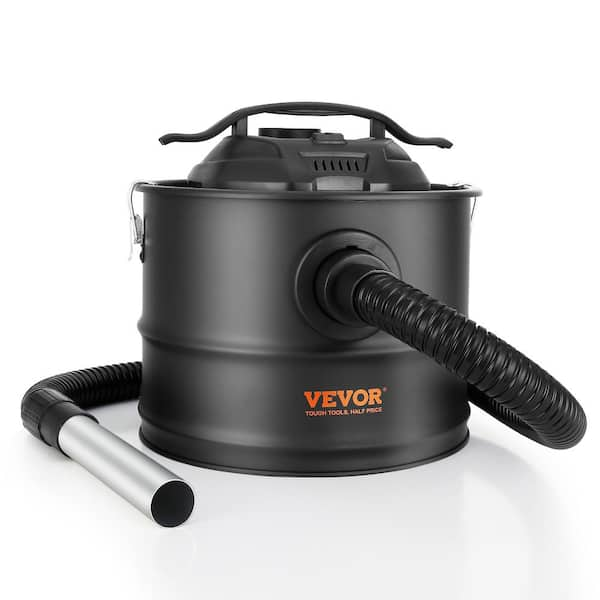Dealing with glass and construction debris can be tricky. They pose safety hazards and require special handling.
Vacuuming this type of debris demands the right technique and tools. Using the wrong method can harm your vacuum or cause injuries. Understanding the best practices ensures a safe and efficient clean-up. Glass shards and construction materials need careful handling to avoid accidents.
Proper vacuuming techniques save time and reduce risks. In this guide, learn how to tackle debris clean-up effectively. Discover the steps and tools needed to keep your space safe and clean. Whether you’re a homeowner or a worker, these tips are essential. Ready to make your cleaning tasks easier and safer? Let’s dive in.
Importance Of Proper Vacuuming
Proper vacuuming of glass and construction debris is crucial. It ensures a clean and safe environment. Vacuuming removes hazardous materials that could cause injuries. It helps maintain a healthy living space. Proper vacuuming techniques can protect your family and workers.
Safety Concerns
Glass and construction debris can pose serious safety risks. Sharp glass fragments can cause cuts and injuries. Construction debris can lead to trips and falls. Proper vacuuming eliminates these hazards. It prevents accidents and ensures safety. Using the right equipment is essential. Choose a vacuum designed for heavy-duty cleanup.
Health Benefits
Effective vacuuming has health benefits. It removes dust and allergens from the air. This reduces respiratory issues. Clean environments lower stress levels. Vacuuming also removes mold spores. Mold can cause serious health problems. Proper vacuuming keeps your space healthy. It ensures a clean and breathable atmosphere.

Credit: www.amazon.com
Essential Tools And Equipment
Effective vacuuming of glass and construction debris requires specialized tools. Use a high-powered vacuum with a HEPA filter to ensure thorough cleanup. Durable attachments help access tight spaces.
When tackling the daunting task of vacuuming glass and construction debris, having the right tools and equipment is paramount. This ensures not only efficiency but also safety for everyone involved. Investing in the correct vacuum types and additional accessories can make a world of difference.Vacuum Types
Choosing the right vacuum is the first step. A standard household vacuum won’t cut it. You need a shop vacuum, often referred to as a wet/dry vac. These vacuums are built to handle heavy-duty tasks and can easily pick up both large debris and fine dust.Consider the horsepower and tank capacity. A vacuum with at least 3 horsepower and a 12-gallon tank is ideal for construction sites. It’s powerful enough to handle the tough stuff, yet manageable in size.Cordless options are also available and can be quite handy. They offer mobility, which is crucial when moving around a large area. However, ensure the battery life suits your needs.Additional Accessories
Accessories can greatly enhance your vacuum’s performance. A HEPA filter, for instance, is a must. It traps the smallest particles, keeping the air clean and reducing health risks. This is especially important when dealing with construction dust, which can be harmful if inhaled.A good set of nozzles is also essential. Crevice tools can reach into tight corners, while brush attachments are perfect for stubborn debris. Flexible hoses allow you to maneuver around obstacles effortlessly.Consider using debris collection bags. They make disposal easier and keep your vacuum cleaner. Look for heavy-duty bags that can handle sharp objects like glass shards.Have you ever struggled with a vacuum that constantly clogs? Using a pre-filter can prevent this. It catches larger debris before it reaches the main filter, extending its life and maintaining suction power.Lastly, don’t forget about ear protection. Vacuums can be loud, especially in enclosed spaces. Protect your hearing with noise-canceling headphones or earplugs.Using the right tools and accessories can transform a frustrating task into a manageable one. What equipment do you find indispensable when tackling tough cleaning jobs? Share your thoughts and experiences!Preparation Steps
Gather necessary tools before starting. Clear the area of large debris by hand. Use a vacuum with a HEPA filter for effective cleaning.
### Preparation StepsPreparing to vacuum glass and construction debris is essential for effective cleaning and safety. Before you dive into the task, take some crucial preparation steps to ensure everything goes smoothly and no one gets hurt.### Area AssessmentFirst, you need to assess the area. Look around the space to identify potential hazards like sharp objects, exposed nails, or unstable structures.Check the size and type of debris you’re dealing with. This helps you choose the right vacuum and attachments.For example, larger pieces of glass might require a different approach than fine construction dust.### Safety GearSafety gear is non-negotiable. Always wear gloves to protect your hands from sharp glass or splintered wood.Goggles are a must to shield your eyes from flying debris. A dust mask is also essential to avoid inhaling harmful particles.Don’t overlook sturdy footwear. Heavy-duty shoes can prevent foot injuries from stepping on sharp objects.What’s your go-to safety gear when tackling a tough clean-up?Taking these preparation steps seriously can make a huge difference in both the efficiency and safety of your cleaning project.Vacuuming Glass Debris
Vacuuming glass debris demands care and attention. Broken glass can pose risks if not handled correctly. Using the right techniques ensures safety and efficiency.
Handling Broken Glass
Start by wearing protective gloves. This prevents cuts and injuries. Use a dustpan and brush to collect larger pieces. Dispose of these in a sturdy container. For tiny fragments, a vacuum is essential.
Vacuum Techniques
Choose a vacuum with a HEPA filter. This prevents the spread of fine particles. Use a nozzle attachment to reach corners and crevices. Move slowly over the area to ensure all debris is collected. Check the vacuum bag or canister. Empty it when needed to maintain suction power.
Vacuuming Construction Debris
Construction sites often leave behind a significant amount of debris. Properly vacuuming this debris ensures a clean and safe environment. This process requires the right techniques and equipment. In this section, we will explore various methods for vacuuming construction debris effectively.
Common Debris Types
Construction sites generate various types of debris. These include dust, wood chips, nails, and insulation fibers. Concrete and drywall particles are also common. Each type of debris requires specific handling techniques. Identifying the debris types helps in selecting the right vacuuming method.
Effective Methods
Using a heavy-duty vacuum cleaner is crucial. Regular household vacuums are not suitable. They lack the power and capacity. Industrial vacuums can handle larger debris and fine dust. Ensure the vacuum has a HEPA filter. This filter traps small particles and improves air quality.
Start by clearing larger debris manually. Use a broom or shovel to remove big chunks. This step prevents clogging the vacuum. Next, vacuum the remaining dust and smaller particles. Move the vacuum slowly to ensure thorough cleaning. Cover all areas, including corners and edges.
For fine dust, use a vacuum with a fine filter bag. This bag captures tiny particles that standard filters miss. Change or clean the filter bag regularly. This practice maintains the vacuum’s efficiency. Also, wear protective gear. Masks and gloves protect from harmful particles.

Credit: www.amazon.com
Maintenance Of Vacuum Equipment
Vacuuming glass and construction debris requires specialized techniques to ensure thorough cleaning. Use a vacuum with a HEPA filter to capture fine particles and prevent clogging.
Maintaining your vacuum equipment is essential for efficient cleaning, especially when dealing with glass and construction debris. Proper maintenance ensures your vacuum operates effectively and lasts longer. This section covers two critical aspects of maintenance: regular cleaning and filter replacement.Regular Cleaning
Regular cleaning of your vacuum is crucial. After each use, empty the vacuum’s collection bin or bag to prevent debris buildup. This simple step keeps your vacuum running smoothly.Wipe down the exterior of the vacuum to remove dust and grime. Pay attention to the hose and nozzle, as these areas often collect fine particles. Use a damp cloth for best results.Check for clogs in the hose or any other part of the vacuum. A clogged hose can reduce suction power and make your vacuum less effective. Use a long, flexible brush to clear any blockages you find.Filter Replacement
Replacing the filter is vital for maintaining your vacuum’s performance. Filters trap fine particles and prevent them from being released back into the air. Check your vacuum’s manual for the recommended replacement schedule.Some vacuums have washable filters. If yours does, clean the filter regularly according to the manufacturer’s instructions. Let it dry completely before reinstalling it.For vacuums with disposable filters, keep a few spare filters on hand. Replace the filter when it shows signs of wear or after a set number of uses. This ensures your vacuum continues to operate at peak efficiency.Remember, maintaining your vacuum equipment not only extends its life but also ensures a cleaner, safer environment. Have you checked your vacuum’s filter recently? It might be time for a change!Disposal Of Collected Debris
Vacuuming glass and construction debris effectively requires specialized equipment. This technique ensures safe removal of sharp fragments and heavy materials. Proper disposal of collected debris follows environmental regulations to prevent contamination.
Vacuuming glass and construction debris is an essential task. Proper disposal of the collected debris is equally important. It ensures safety and cleanliness. Here, we will discuss effective ways to handle glass and construction waste.Glass Disposal
Collected glass pieces need careful disposal. Use thick, puncture-resistant bags. Place glass shards in these bags. Seal the bags tightly. Label them as “glass waste.” This prevents accidents. Always wear gloves. Transport the bags to a designated glass disposal facility. Follow local guidelines for glass waste.Construction Waste Management
Construction debris includes wood, metal, and concrete. Sort the debris first. Separate recyclable materials. Use separate containers for each type. Label containers clearly. Transport the sorted materials to recycling centers. Non-recyclable waste should go to a licensed landfill. Follow local disposal regulations for construction debris. “`Expert Tips And Best Practices
Vacuuming glass and construction debris requires specific techniques to ensure safety and efficiency. Using the right methods helps avoid common mistakes and speeds up the process. Here are expert tips and best practices for handling this task.
Avoiding Common Mistakes
Never use a regular vacuum for glass. It can damage the machine and cause injuries. Always use a wet/dry vacuum designed for debris. Ensure the vacuum has strong suction power. Weak vacuums will not pick up heavy debris effectively.
Do not forget to wear protective gear. Gloves and goggles are essential for safety. Many people skip this step. It is crucial to prevent injuries. Regularly check the vacuum filters. Clogged filters reduce efficiency and can damage the vacuum. Keep the area well-lit. Poor lighting can lead to missed debris and accidents.
Enhancing Efficiency
Start by collecting larger pieces manually. This reduces the load on the vacuum. Use a broom to gather small debris into piles. This makes vacuuming quicker. Always move the vacuum slowly over debris. Fast movements can scatter the debris instead of collecting it.
Empty the vacuum frequently. A full vacuum loses suction power. Regularly check and clean the filters. Clean filters ensure optimal performance. Use attachments designed for debris. Specialized attachments improve efficiency and safety. Plan the cleanup in sections. Working in sections helps manage time and effort better.

Credit: www.homedepot.com
Frequently Asked Questions
How Do You Vacuum Glass?
Use a shop vacuum with a hose attachment. Sweep up large glass pieces first. Vacuum the smaller shards carefully. Dispose of debris safely.
What Is The Correct Procedure For Picking Up Contaminated Glass?
Wear gloves and use tongs or a dustpan and brush to pick up the contaminated glass. Place the glass in a puncture-resistant container. Dispose of the container in a designated hazardous waste bin. Clean the area thoroughly with a disinfectant.
Wash your hands immediately after.
How Do You Remove Debris From Glass?
To remove debris from glass, use a soft cloth and glass cleaner. Gently scrub in circular motions. For stubborn debris, use a razor blade carefully.
Which Of These Is The Best Method For Picking Up The Glass Pieces?
Use a broom and dustpan to pick up glass pieces. Wear gloves for protection. Dispose of the glass in a sturdy bag.
Conclusion
Cleaning up glass and construction debris requires careful attention. Use the right vacuum and attachments. Wear protective gear to stay safe. Follow the steps shared to make the process easier. Your space will be clean and safe in no time.
Remember, a clean site is a safe site. Happy cleaning!

